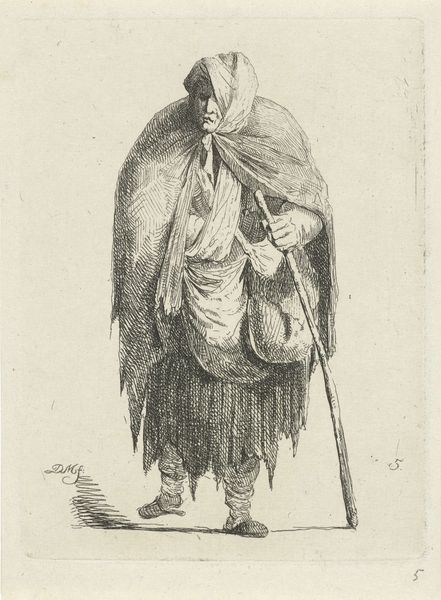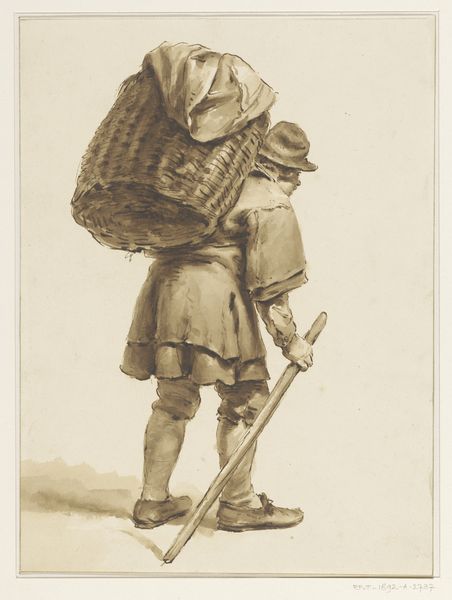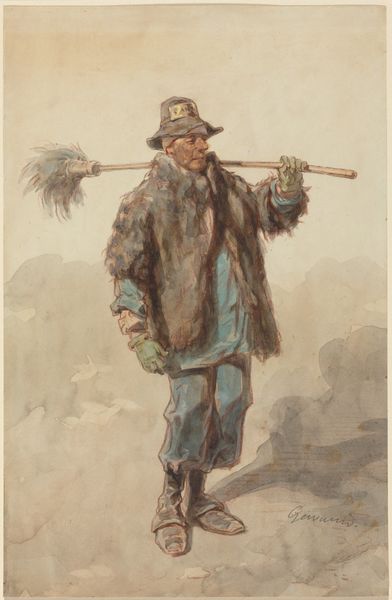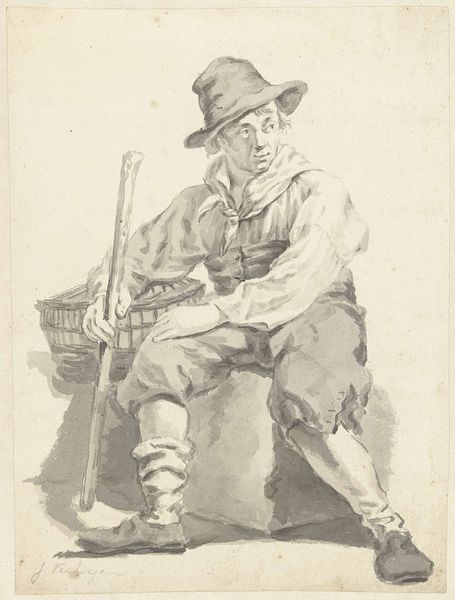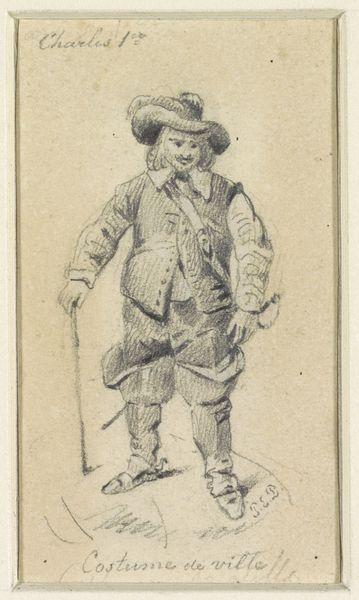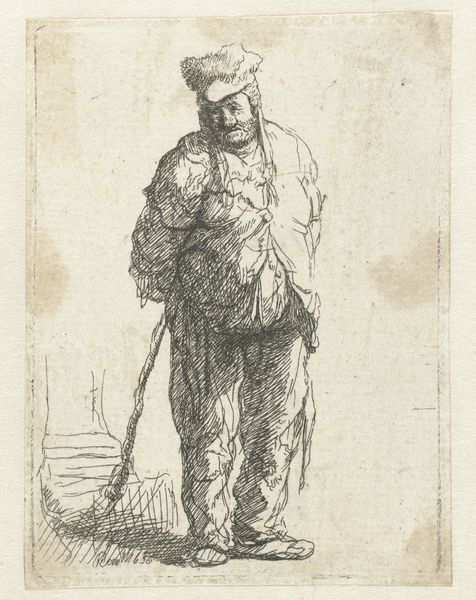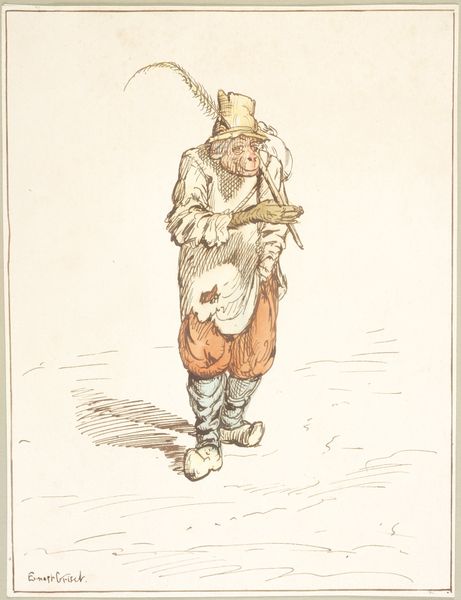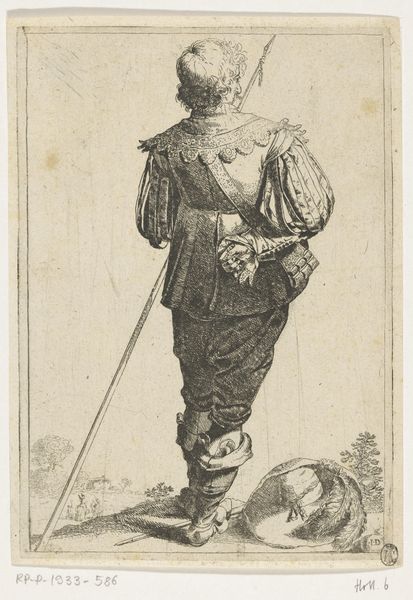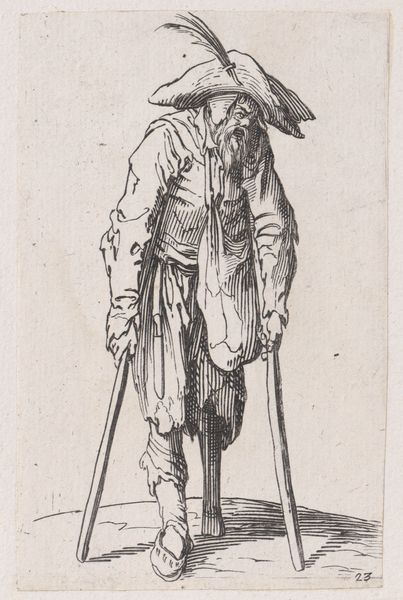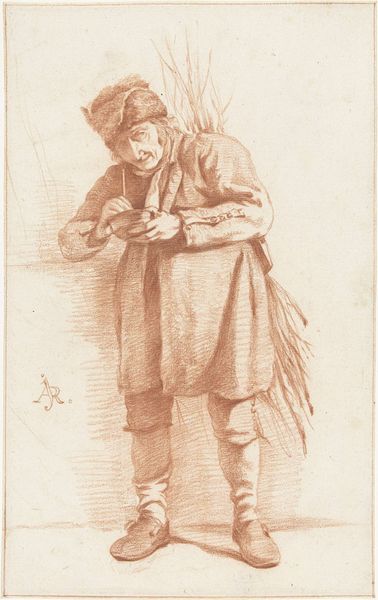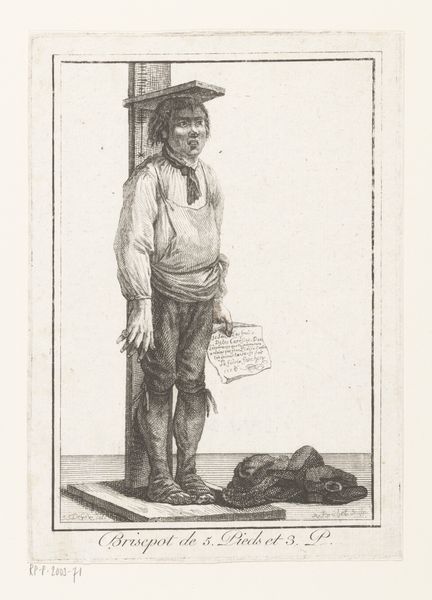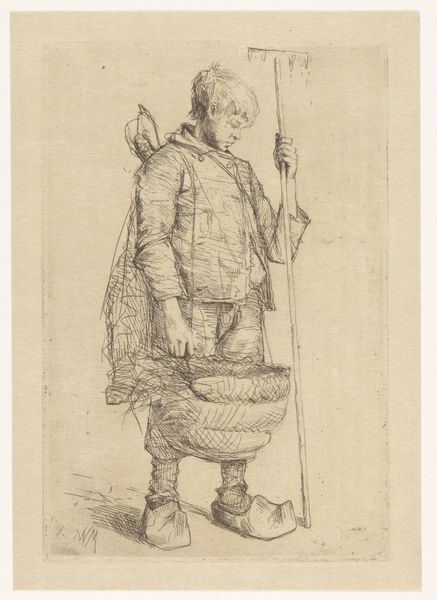
Houthakker met een takkenbos over de schouder en een bijl aan de gordel 1790 - 1852
0:00
0:00
drawing, paper, ink
#
portrait
#
drawing
#
caricature
#
paper
#
ink
#
romanticism
#
genre-painting
Dimensions: height 315 mm, width 194 mm
Copyright: Rijks Museum: Open Domain
Pieter Christoffel Wonder made this drawing of a woodcutter, rendered in pen and brown ink, likely in the early 19th century. It's a fairly straightforward use of traditional art materials, but notice how the medium itself emphasizes the subject: a common laborer. The brown ink skillfully defines the woodcutter's stooped posture and weary expression. The lines vary in thickness, suggesting the weight of his burden. There's a sensitivity to the man's clothing, suggesting the texture of roughspun cloth, and the coarse wooden clogs on his feet. Consider the woodcutter's labor, and the energy required to harvest and carry the bundle. The drawing is not just a representation, it's an embodiment of that labor through Wonder’s meticulous strokes. It invites us to consider the social context of the working class, and the dignity inherent in manual work.
Comments
No comments
Be the first to comment and join the conversation on the ultimate creative platform.
